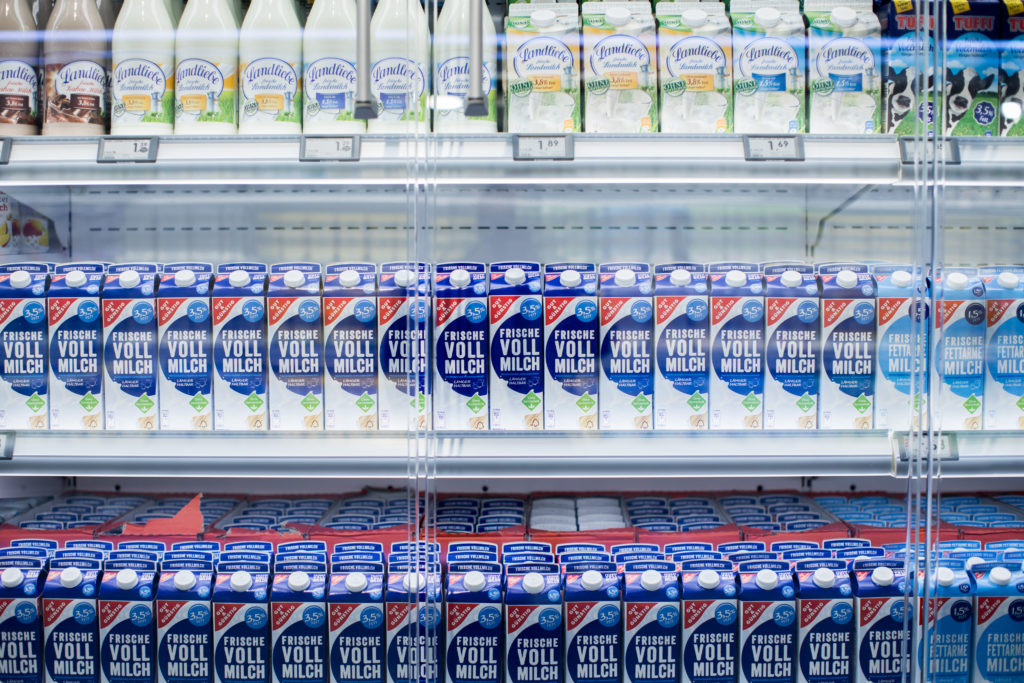Which products are getting more expensive in Germany?

Along with increasing energy costs, rising food prices are currently one of the biggest drivers of inflation in Germany. Some foodstuffs are set to increase in price even more, however a few items have got less expensive compared to last year.
Shoppers in Germany have been feeling the pinch of higher grocery prices for some time now, but experts are warning that the worst could still be yet to come.
Stefan Benett, Managing Director of Inverto, a purchasing consultancy for companies, recently told the Handelsblatt newspaper: "There are high costs in the supply chains that have not yet arrived in consumer prices."
Meanwhile, a report by the Federal Statistical Office released on Wednesday showed a breakdown of prices compared with those last year which showed just how much some products have increased in price.
READ ALSO: German consumers warned to expect higher food prices
Here's a look at what has gone up and which products are likely to get more expensive.
Milk and animal products
The report by the Federal Statistical Office showed that the price of milk has gone up significantly since July last year - with a price increase of 51.7 percent.

Groceries in a shopping cart at a food market in Mecklenburg-Western Pomerania. Photo: picture alliance/dpa | Jens Büttner
High energy and grain costs have driven up prices for most animal products, as farmers themselves had to pay 29 percent more to slaughter animals. Prices for poultry, for example, have risen 37.7 percent in the last year.
Cheaper fruit and vegetables
It's not all bad news. Prices for fruit and vegetables have dropped slightly since last year. Prices for fruit in July 2022 were 6.3 percent lower than a year ago and vegetable prices 2.3 percent lower than in July 2021.
The drop in the price of dessert apples was particularly striking, with a drop of 17.1 percent, while the price of cauliflower fell by 24.3 percent and tomatoes by 29 percent.
What's likely to go up?
Consumers will also have to prepare to pay more to indulge their sweet tooth in future, as prices for confectionery and sweet drinks will go up.
Soft drink manufacturers Coca-Cola have already announced price increases, while Milka manufacturers Mondelez and Haribo also recently announced that their products will become more expensive.

Bottles of Coca-Cola- Photo: picture alliance / Karl-Josef Hildenbrand/dpa | Karl-Josef Hildenbrand
Consumers are also facing further price increases this year for detergents, deodorants and shower creams.
Nivea manufacturer Beiersdorf already passed on its increased costs to the consumers at the beginning of the year and is currently in negotiations with retailers regarding further price increases.
Comments
See Also
Shoppers in Germany have been feeling the pinch of higher grocery prices for some time now, but experts are warning that the worst could still be yet to come.
Stefan Benett, Managing Director of Inverto, a purchasing consultancy for companies, recently told the Handelsblatt newspaper: "There are high costs in the supply chains that have not yet arrived in consumer prices."
Meanwhile, a report by the Federal Statistical Office released on Wednesday showed a breakdown of prices compared with those last year which showed just how much some products have increased in price.
READ ALSO: German consumers warned to expect higher food prices
Here's a look at what has gone up and which products are likely to get more expensive.
Milk and animal products
The report by the Federal Statistical Office showed that the price of milk has gone up significantly since July last year - with a price increase of 51.7 percent.

High energy and grain costs have driven up prices for most animal products, as farmers themselves had to pay 29 percent more to slaughter animals. Prices for poultry, for example, have risen 37.7 percent in the last year.
Cheaper fruit and vegetables
It's not all bad news. Prices for fruit and vegetables have dropped slightly since last year. Prices for fruit in July 2022 were 6.3 percent lower than a year ago and vegetable prices 2.3 percent lower than in July 2021.
The drop in the price of dessert apples was particularly striking, with a drop of 17.1 percent, while the price of cauliflower fell by 24.3 percent and tomatoes by 29 percent.
What's likely to go up?
Consumers will also have to prepare to pay more to indulge their sweet tooth in future, as prices for confectionery and sweet drinks will go up.
Soft drink manufacturers Coca-Cola have already announced price increases, while Milka manufacturers Mondelez and Haribo also recently announced that their products will become more expensive.

Consumers are also facing further price increases this year for detergents, deodorants and shower creams.
Nivea manufacturer Beiersdorf already passed on its increased costs to the consumers at the beginning of the year and is currently in negotiations with retailers regarding further price increases.
Join the conversation in our comments section below. Share your own views and experience and if you have a question or suggestion for our journalists then email us at [email protected].
Please keep comments civil, constructive and on topic – and make sure to read our terms of use before getting involved.
Please log in here to leave a comment.